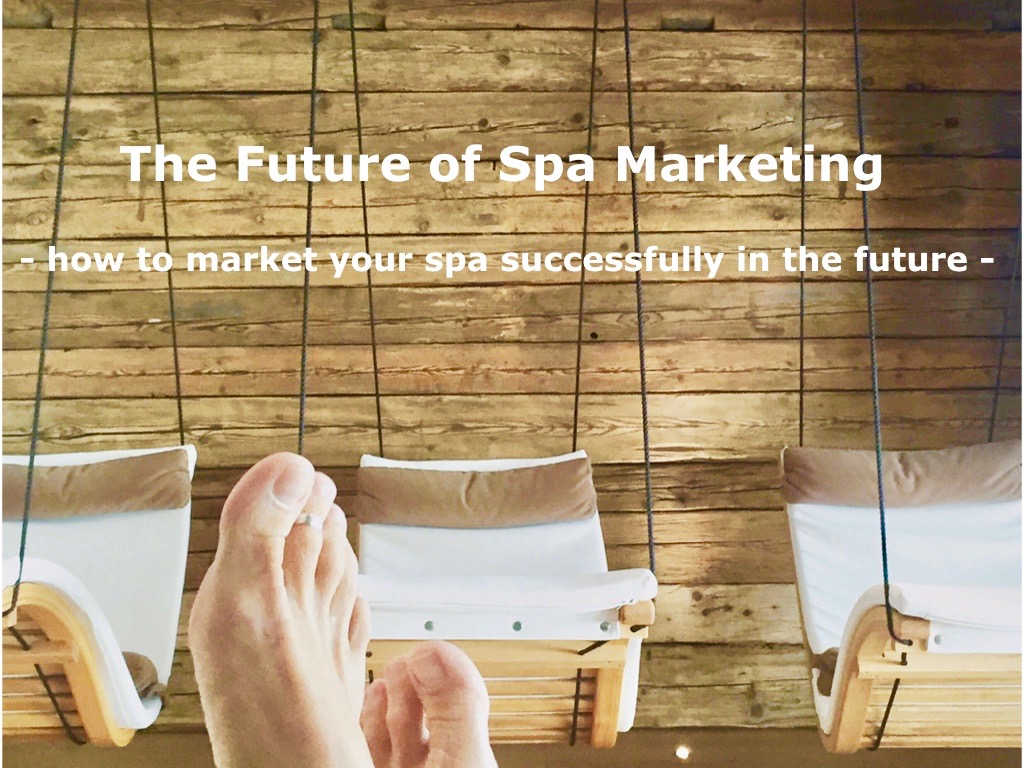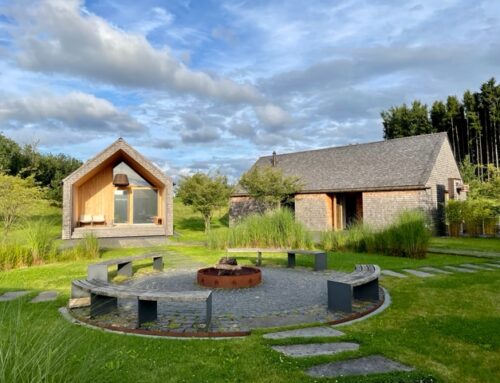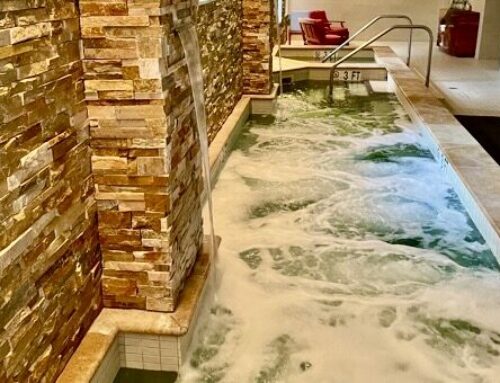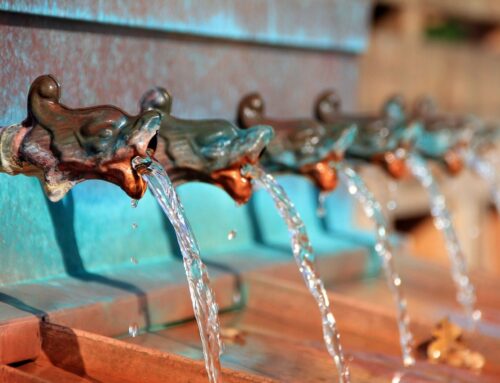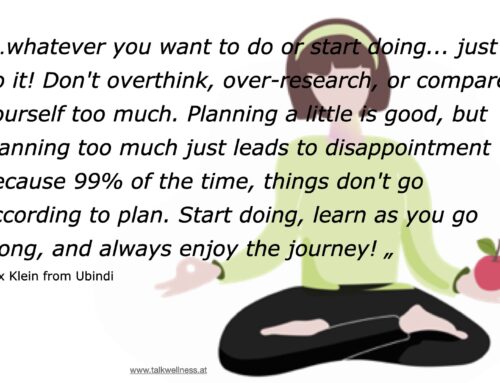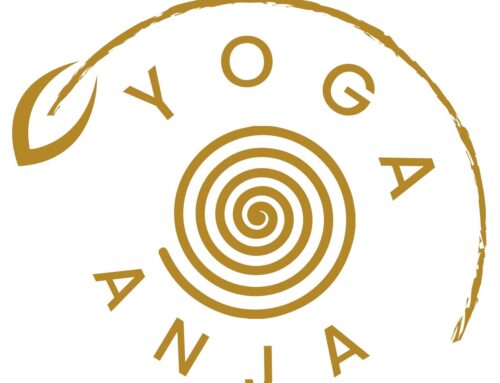Here comes another great guest article about the future of spa marketing by former student Tabitha Leibetseder, who has just successfully completed her master’s degree in tourism and leisure management. The topic for her master thesis was “Successful Spa Marketing and Branding for Central European Hotel and Resort Spas with a focus on the German speaking Market”. Although Tabitha focuses on a certain geographical area in her thesis, I believe that her reserach findings as below apply to spas all over the world, and not only limited to hotel spas. Enjoy reading this educational piece (a summary of her thesis) and please tell us what you think!
The future of Spa Marketing – how to market your Spa successfully in the future
The future of Spa Marketing – the most important trends are
-
Digitalization
Everything that has to do with two-way-communication, Social Media, videos, user generated content, SEO, and micro influencers will be of interest for the future, especially since millennials will be the new main target group. Online bookings together with live chats, providing all the information online or via apps, and working together with bloggers will become inevitable. Future trends might also include the possibility to control more via spoken instructions or having a humanoid robot who provides basic information and supports the employees.
-
Experts and Specialists
– both spa managers and therapists. Most of the time, the longest serving therapists become spa managers who then generally do not have the management education or the specialist know-how. Moreover, spa manager is a very difficult job as they have to know about the treatments, business administration, HR management, marketing, and operational problems. What makes it even more difficult is lack of empowerment to act autonomously. Lots of times when there is a therapist shortage, spa managers have to do treatments on their own for the most part of the day. Hence they do not have time anymore for management tasks.
-
Individualization and Personalization
Technology will give spa receptionists and therapists more time to have personal conversations with guests, which they need to better adapt to the guests’ needs. Nowadays it sometimes seems like mass processing, but the trend will go more in the direction of increased personal consultancy, more individual conversations, and focusing more on the time before and after the treatment. This will even lead to the increased development of wholistic concepts including psychological support and sports coaching, like some spas, especially in the US, already successfully implemented.
Target Groups
Considering those future trends regarding Spa Marketing, how can you market your Spa successfully to potential clients?
-
Integrate the Spa into the Structure of the Hotel
Passion for the spa should also be visible at the management level as the success of the spa heavily depends on the hotel’s overall strategy. Unfortunately, this is rarely the case and most errors happen between the spa and the marketing department or the management. The spa people very often are viewed as ‘the others’, the spa department is not seen as equivalent department, and the spa managers are not included in the management meetings. Everything that is done for marketing the spa depends on the hotel’s overall strategy, therefore it is advisable to first take a look at the hotel’s marketing communication strategies and then break it down to the spa.
-
Have a Marketing Plan
Spas usually do not have their own marketing plan nor are the marketing activities considered in the hotel marketing plan. Only very few spas create small ‘action plans’ where they list the spa’s most important in-house marketing activities. However, a detailed marketing activities plan needs to be set up well in advance and communicated to all employees.
-
Use the right marketing communication tools
You need to find those marketing communication tools that are most effective for your spa. Then decide to what extent to use those tools. Usually, spas focus a lot on in-house marketing (e.g. daily morning mail, brochures, flyers, stand-up displays). Also on online marketing (e.g. Social Media, rating platforms, newsletters), or offline marketing (e.g. newspapers, magazines, radio), and PR. However, pre-selling, up-selling, and cross-selling come at no additional cost and are very effective marketing tools.
For example:
Well trained receptionists sell treatments already on the phone when guests are calling or when they arrive at the hotel reception. Therapists can sell more expensive or longer treatments. All other employees can promote the spa facilities and treatments. Another tool which is not considered at all by many spa managers (although it is very simple and cheap) is guerilla marketing – disseminating a surprising, shocking, clever, or funny message to the people in a unique way.
-
Focus on different Target Groups and use different Marketing Strategies
Very often spas do not have a clear definition of their target groups. And even if they have one, they use standardized marketing activities for all guests. However, spas should use different marketing strategies for every target group and highlight individualized offers for them. For example, outside the holiday season when there is for example a relatively large number of mothers-to-be and young mothers in-house, treatments for that target segment are promoted. Or during school holidays, the spa can offer special activities for children.
-
Measure the Success of your Marketing Activities
Finally, it is important to measure the ROI of your marketing activities in order to see whether they are profitable or not. Because this is very difficult, many spas don’t do it or simply rely on asking their guests how they heard about the spa. Using booking codes or Google Analytics to see how many guests are staying on which section of the homepage or the newsletters. Understanding which articles are clicked how many times gives you a clear competitive advantage.
Success factor: Is your spa in the introduction phase? Then the use of integrated channels and mass marketing might be adequate for you. As well as advertisements with which you refer to your online information channels, for example a YouTube video about the house, the website, or newsletters. In case your brand is already well established, mass marketing is not needed anymore. Instead the focus should be put on loyalty programs and regular customers.
Spa Branding
Successful Spa Marketing goes hand in hand with a strong Spa brand. Here are some tips how to build a successful spa brand in the future of spa marketing:
-
Define Vision, Mission, Goals and USP
Is your spa brand an extension of the hotel brand or is it very individual and completely different? If a spa has its own independent brand it has to do everything by itself. However if the spa brand is in line with the hotel brand, every time the hotel is doing marketing, the spa also gets some exposure. Besides, hotels are more advanced in knowing what their mission, vision, and USPs are. Hence, it is probably easier for small and medium-size hotels if the spa aligns with the hotel.
-
Know your hotel guests and have a clear position in the market
Without a hotel strategy there is no spa conception. The spa must know the hotel’s guests and target groups exactly as they are a spa’s main target segment. The spa brand must fit the guests and the managers and differentiate itself from the competition. Only if a spa positions itself clearly on the market, the guests can understand the brand and consider it authentic.
-
Develop a well-defined Spa Concept
It might be very helpful to focus on a special topic. For example a local theme, or a special business, or employee culture. This is then communicated through the whole spa or even the whole hotel. Additionally, a logo can be designed which is different from the hotel logo as well as a name for the spa to provide the guests with visual aspects.
-
Employee Branding
Employees can think of themselves as actors spreading the spa brand. Only if employees understand the spa brand and its values they can communicate it to guests. This way they can create an authentic experience for them. Of course, this requires regular trainings that are in accordance with the brand.
Success factor: Communicate your spa brand through every aspect such as print material, towels, shampoos, your own product line, a signature motif, and employee uniform. No limits exist in the communication of your spa brand. Generally, the more creative ideas a spa has, the more interest it will receive from guests and the media. Be consistent in what you are doing and always appear in the same look, feel, and wording!
How about the future of your Spa Marketing? Consider those tips to establish a successful Marketing and Branding concept.
You want more articles about Spa Marketing on TalkWellness? Simply put ‘spa marketing’ in the search box (top right on main page). Thus you can browse through more great spa marketing content.
About Tabitha
Tabitha holds a bachelor’s degree in Sales & Marketing and recently completed her master’s degree in Tourism Management in Lower Austria. She is Currently looking for an opportunity in Sales, Marketing, and Event management. In her spare time Tabitha loves to do sports, especially strength and endurance training, basketball, yoga, hiking, and swimming. Another passion of hers is travelling. Her favorite destinations are Mexico and Australia, and her favorite city is Rome.

